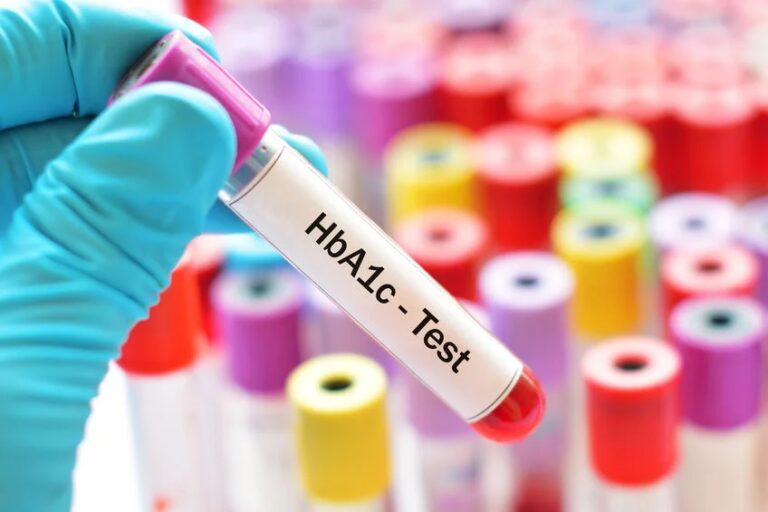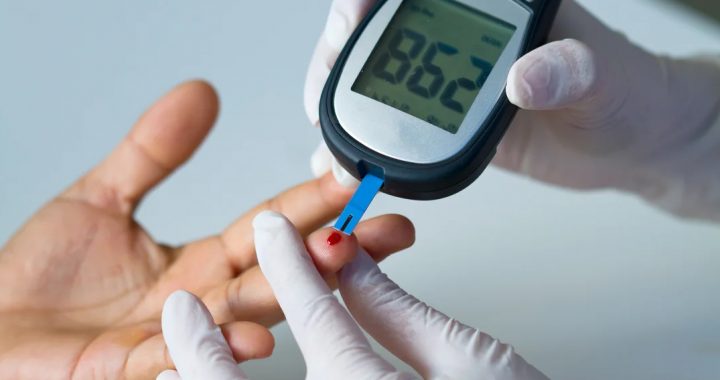Metformin
Metformin is one of the most frequently prescribed diabetes medications worldwide. For people with type 2 diabetes, it is very effective at controlling their blood sugar levels. Polycystic ovary syndrome (PCOS) can be managed with metformin. symptoms like infertility, weight gain, acne, and irregular periods by boosting menstrual regularity and stabilizing hormone levels. While the medication is for the most part protected, its utilization for PCOS isn’t FDA-endorsed and is viewed as off-mark. Normal aftereffects incorporate gastrointestinal issues, and uncommon however serious secondary effects, for example, lactic acidosis can happen, particularly in those with kidney or liver issues.
Metformin works by diminishing sugar creation by the liver, lessening sugar retention in the digestive organs, and diminishing insulin obstruction,
Signs Metformin Is Working (Or Isn’t Working)
When you start taking metformin, it can take a while to see any positive change in blood sugar levels or weight.
If you’ve recently added this medication to your daily routine, you may be anxious to see results, and fast.
This article will investigate how you will know if your metformin is or isn’t working, and what you can do about it.
Key Points:
Metformin’s viability is principally demonstrated by lower glucose levels, diminished HbA1c levels, and now and again, unassuming weight reduction. These progressions could require a while to become perceptible.
Determined high glucose levels, no improvement in HbA1c following a while, and absence of weight reduction (or weight gain) in spite of a sound way of life might flag that metformin isn’t working successfully.
Normal results of metformin, like sickness, the runs, and a metallic desire for the mouth, ordinarily die down inside half a month. Serious incidental effects or delayed inconvenience ought to be examined with a medical care supplier.
On the off chance that metformin isn’t appropriate, elective medications incorporate insulin treatment, SGLT-2 inhibitors, GLP-1 receptor agonists, and others. Counseling a medical care supplier prior to rolling out any improvements to drug regimens is critical.
List of chapters
For what reason truly do individuals take metformin?
Metformin is a first-line treatment for prediabetes (a condition where blood glucose levels are high, however not in that frame of mind for a diabetes finding) and type 2 diabetes.
Metformin works by increasing the effectiveness of the body’s own insulin, reducing glucose absorption in the intestines, and glucose production in the liver. The levels of sugar in the blood drop as a result.
Metformin is recommended by the American Diabetes Association (ADA) for people with:
prediabetes between the ages of 25 and 59 years of age
a HbA1c level (a proportion of glucose command over the past 2 to 90 days) of 6% or higher
a BMI (weight file, a proportion of weight comparative with level) of 35 or higher
fasting plasma glucose (fasting somewhere around 8 hours) of 110 mg/dL or higher
an earlier gestational diabetes determination (a sort of diabetes that happens during pregnancy)
a sort 2 diabetes determination
Taking metformin consistently can assist with further developing insulin responsiveness, lessen hunger, lower glucose, and reduction HbA1c levels, and could in fact assist individuals with losing an unobtrusive measure of weight when utilized related to a solid eating regimen and ordinary actual work.
Results of metformin
Encountering results of any new medication, including metformin, is incredibly normal. The majority of these secondary effects are minor and die down inside half a month of taking the prescription.
Metformin’s side effects are not a sign that it isn’t working for you.
Be cautious for the accompanying side effects and contact your PCP in the event that they deteriorate or don’t disappear on their own inside half a month:
- Nausea
- Vomiting
- Diarrhea
- Decreased appetite
- Weight loss
- Low blood sugar (especially if you also take insulin)
- A metallic taste in your mouth
- Heartburn
- Bloating
- Gas
- Constipation
- Stomach pain
- Seek emergency medical attention if you’re experiencing severe nausea and have low blood sugar, and you cannot keep anything down with which to treat it.
You can learn more in our guide Metformin Side Effects: What You Need to Know.
Signs metformin is working
There are a few signs that your metformin is working. The effects of the medication may build over time, so do not worry if you do not see immediate results.
Lower blood sugar levels
If you check your blood sugars regularly at home, you may notice that your blood sugar levels are consistently lower once you start taking metformin. This may be particularly true after eating, when you may be used to elevated levels.
Lower HbA1c level
If you do not check your blood sugar levels at home, you can contact your doctor’s office after a few months on metformin so they can run an Hba1c test, which measures your average glucose control over the previous 2 to 3 months.
Your HbA1c should be lower after a few months on metformin. If not, discuss alternative medications to metformin and/or lifestyle changes with your doctor.
You can also measure your HbA1c at home with a simple test kit you can buy at your local pharmacy or online.
You’ve lost some weight
Additionally, you may notice that you’re losing some weight, especially if you’re taking metformin in conjunction with adopting a healthy diet and increased physical activity. However, weight loss is often modest and can be inconsistent.
Signs metformin is not working
If you’ve been taking metformin for a month or more and notice the following symptoms, it can be a sign that metformin is not working.
In this case, you may need to either increase your dose, work with your doctor to experiment with combination drugs, or seek an alternative medication.
Keep a watch out for the following signs:
Your blood sugar levels have remained stubbornly high
If your blood sugars continue to spike after meals, or you have been routinely waking up with high blood sugar levels despite taking metformin, it may be a sign that the medicine isn’t working and you should call your doctor.
It’s easiest to track your daily blood sugar levels if you have an at-home blood glucose meter or a continuous glucose monitor (CGM).
Your HbA1c level has not improved
Most likely, your baseline HbA1c level before starting treatment was higher than your target range. If after some time on metformin (usually 3 months) it hasn’t budged, this is a sign that metformin is not reliably bringing your blood sugar levels down.
It’s important to be aware of the signs of high blood sugar. These include:
- Increased hunger
- Increased thirst
- Blurry vision
- Increased and frequent urination
- Fatigue
- Lethargy
- Muscle aches
- Headache
- Fruity-smelling breath
Weight loss (which may be confused with metformin working, but is also a sign of dangerously high blood sugar levels)
You’re not losing weight or you’ve gained weight
Metformin doesn’t cause weight loss in everyone who takes it, but many people do enjoy modest weight loss (less than 10 pounds) after taking the medication for several months.
However, if you’re eating healthy and exercising regularly along with taking metformin, but your weight hasn’t budged or you’ve gained weight, this could be a sign that you may need to increase your dose or seek an alternative. This may be a sign that you need to contact your doctor.
Frequently asked questions
How long does metformin take to work?
The medication needs time to build up in your system, and oftentimes, your doctor will start you on a low dose to avoid uncomfortable side effects.
Do not expect a miracle within the first week of treatment. That said, after a few weeks, you should start to notice lower blood sugar levels, especially after meals.
Any weight loss and improvements in HbA1c levels, however, may take several months of taking metformin at your full dose.
How long should I be on metformin before giving up?
Don’t stop taking metformin before it has a chance to fully work in your body, which can take up to several months.
Also, never stop taking a prescribed medication before talking with your doctor. Quitting any drug cold turkey can cause unpleasant side effects, so weaning under the guidance of your doctor is key.
How can I maximize the benefits of metformin?
Metformin by itself is not a miracle drug. To enjoy the maximum benefits from the medication, it is best combined with healthy eating and regular physical activity.
Work with your doctor or a registered dietitian (RD) to develop a meal plan and set of healthy activities that you can fit into your lifestyle.
The U.S. Centers for Disease Control and Prevention (CDC) recommends that most adults target at least 150 minutes of moderate exercise weekly, averaging about 30 minutes a day. This can include activities like walking, jogging, swimming, or cycling.
Additionally, they recommend incorporating muscle-strengthening exercises, such as weightlifting, at least twice a week.
Does metformin become less effective over time?
Your dose of metformin may need to be increased over time to continue effectively managing your blood glucose levels. This can be due to a variety of factors. For instance:
If your diet and lifestyle habits are not able to sufficiently help manage your blood sugar levels, a higher dose might be required. It’s important to remember that metformin is intended to complement, not replace, healthy eating, exercise, and other lifestyle modifications.
Diabetes is a progressive condition, so its severity can increase over time due to various health factors, including aging.
Changes in liver or kidney function can affect how the body processes medications, potentially impacting metformin’s effectiveness.
In such cases, a healthcare provider can evaluate whether introducing an additional medication or switching to a different treatment might be more beneficial.
What are the alternatives to metformin?
If metformin truly isn’t working for you, there are alternatives. For some people with unmanaged blood sugar levels, starting insulin therapy may be a more suitable option.
Metformin combination drugs, which combine metformin with another medicine, may be another option for people who find metformin alone isn’t adequately managing their blood sugar levels.
Additional drug classes available for the treatment of type 2 diabetes in the United States include:
Sulfonylureas
Glipizide (brand name Glucotrol)
Glimepiride (Amaryl)
Glyburide (Diabeta, Glynase)
Meglitinides
Repaglinide (Prandin)
Nateglinide (Starlix)
Thiazolidinediones
Pioglitazone (Actos)
Rosiglitazone (Avandia)
DPP-4 Inhibitors
Sitagliptin (Januvia)
Saxagliptin (Onglyza)
Linagliptin (Tradjenta)
Alogliptin (Nesina)
GLP-1 Receptor Agonists
Exenatide (Byetta, Bydureon)
Liraglutide (Victoza)
Dulaglutide (Trulicity)
Semaglutide (Ozempic)
Lixisenatide (Adlyxin)
GIP/GLP-1 receptor agonist
Tirzepatide (Mounjaro)
SGLT2 Inhibitors
Canagliflozin (Invokana)
Dapagliflozin (Farxiga)
Empagliflozin (Jardiance)
Ertugliflozin (Steglatro)
Alpha-Glucosidase Inhibitors
Precose (generic only)
Miglitol (Glyset)
Finally, if you’re experiencing low blood sugar levels or don’t feel well on metformin, you may be able to wean yourself completely off the medication without starting anything new. Talk to your doctor to learn more.
Final thoughts
Millions of people rely on metformin, an affordable and widely available medication, for improved blood sugar control.
It’s crucial to monitor any side effects and document your experience to determine whether the medication is or isn’t working for you.
If you encounter ongoing uncomfortable side effects or if the desired results are not achieved after a few weeks, it’s important to speak up. Remember, there are alternative treatments that might work better for you and your health goals.W







